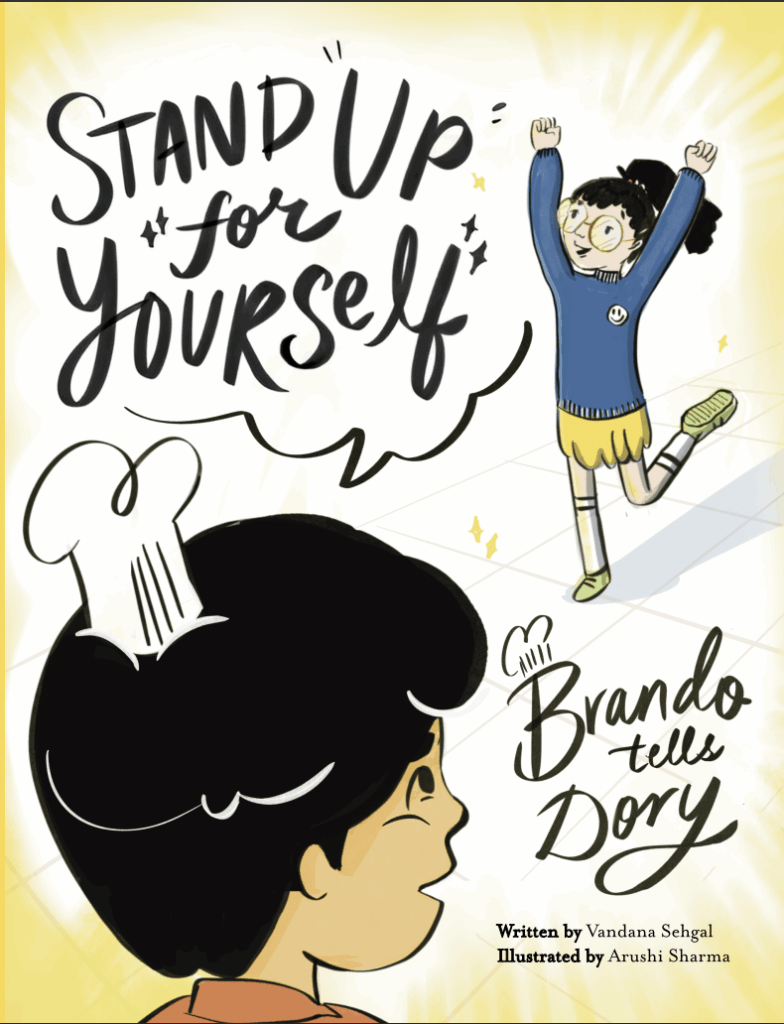#BOOKREVIEW27
CHILDREN’S PICTURE BOOK REVIEW AS A WRITER AND A READER
Title: Ganesha’s Sweet Tooth
Author: Sanjay Patel & Emily Haynes
Illustrator: Sanjay Patel
Genre: Children’s Picture Book
Target Reader: 2 – 6 years
Ganesha’s Sweet Tooth is a light, fun story about how Ganesha broke his tooth and how he made good use of it. There are many stories around the Indian god Ganesha breaking his tusk, but the authors of this book, Sanjay and Emily, have given it an interesting twist for children to stay hooked to the story.
In the story, Ganesha, the child with elephant head, and his best friend, Mr. Mouse, loved eating laddoos. One day, Ganesha found a new kind of laddoo, the Super Jumbo Jawbreaker Laddoo. Mr. Mouse warned Ganesha, but who can stop him from eating his favourite treat? The moment he took a bite, his tusk broke. Upset, Ganesha threw his tusk toward the moon, but it hit the head of an old man, Vyasa, who was looking for him. Vyasa was a poet who needed Ganesha’s help in writing a special scribe for a poem. The condition was that Ganesha would write continuously and had to understand the meaning of everything Vyasa said.
Ganesha agreed, but he didn’t have a pen. He offered to write with his tusk, and that’s how he made the best use of it. By the end of this exercise, Ganesha had finished writing one hundred verses, and the Mahabharata was completed.
If you search Indian mythology, you will find many stories related to Ganesha’s broken tusk. No one knows the true story behind it, but Sanjay and Emily have made it relevant and interesting for children. The first part of the story about Ganesha breaking his tusk is fictional, but there are traces of the myth about Ganesha using it to write the epic Mahabharata, narrated by Rishi Vyasa.
In today’s tech savvy world, where books, mythology and mythical characters are losing their charm, this book creates awareness among children about Lord Ganesha, Rishi Vyasa, the Mahabharata, and the famous Indian laddoos. These are facts of Indian mythology and they help generate curiosity and interest among young readers. Such books help children to connect to their roots and culture. This book can be a great conversation opener for those who want to introduce Indian mythology to children.
The illustrations by Sanjay Patel are vibrant and unique and captures the richness of Indian culture in its truest form. They are detailed, with bright colours and contrasts. Sanjay has used dotwork in the illustrations to provide depth and texture to the designs. It generates visual interest for the reader. The jewellery and clothing are depicted with extensive use of dotwork, which enhances the cultural authenticity of the artwork.
My favourite page in this book is the portrayal of the Mahabharata through multiple scenes on a double spread. I loved the character presentation and the visual storytelling of the biggest war between the two dynasties. However, I could make sense of the visuals only because I know the Mahabharata. Since this book is meant for children and international readers may read it, the visual presentation might confuse them. A reader unfamiliar with the story of the Mahabharata (the biggest war) might find the visuals meaningless.
The story opens with a beautiful picture of Ganesha on one side of the page and with a rangoli design on the other side. On turning the pages, one gets mesmerised by the presentation of multiple activities done by Ganesha, which adds to the reader’s struggle. The text gets lost between the intricate designs and the vibrant colours used to show multiple scenes. I struggled a bit to find the text among the illustrations in the first few pages. As a teacher, one way to tackle that problem is by showing the complete book to the class first and then read the story aloud and turn page one by one.
As an author, I loved that writers have taken care of a peculiar challenge reader of foreign language might face. The writers have provided a guide for some common pronunciations of words of Indian origin that could be hard for the reader for example: Laddoo: LA-du or Ganesha: guh-NAY-Shuh.
Ganesha’s Sweet Tooth is a piece of art with its illustrations. I loved every bit of it, however, the same visual richness that makes it beautiful can also be a challenge for readers. The book could easily be nominated for its stunning illustrations and colour combinations though those very qualities can occasionally make it harder to read.

I am an author, teacher, and holistic wellness coach with a deep passion for children’s growth and self-worth. Reviewing children’s books inspired me to write my own picture book, Stand Up for Yourself: Brando Tells Dory.
The story reflects my belief that every child deserves acceptance—not only from others but also from within. Through Dory’s journey of finding her voice and Brando’s support, young readers learn that standing up for themselves and asking for help are powerful acts of self-respect.
At its heart, my work reminds children—and adults alike—that every voice matters, and every child has the right to say, “I matter.”
Click here to get a copy for your child
About A New You:
We all deserve to have everything in our life exactly the way we want it.The first step begins with believing that every moment is bringing an opportunity to be a new you. As a founder, I provide tools to elevate all dimensions of your life and I teach you the art of writing to reach to your true potential.
Vandana Sehgal | Founder – A New You
